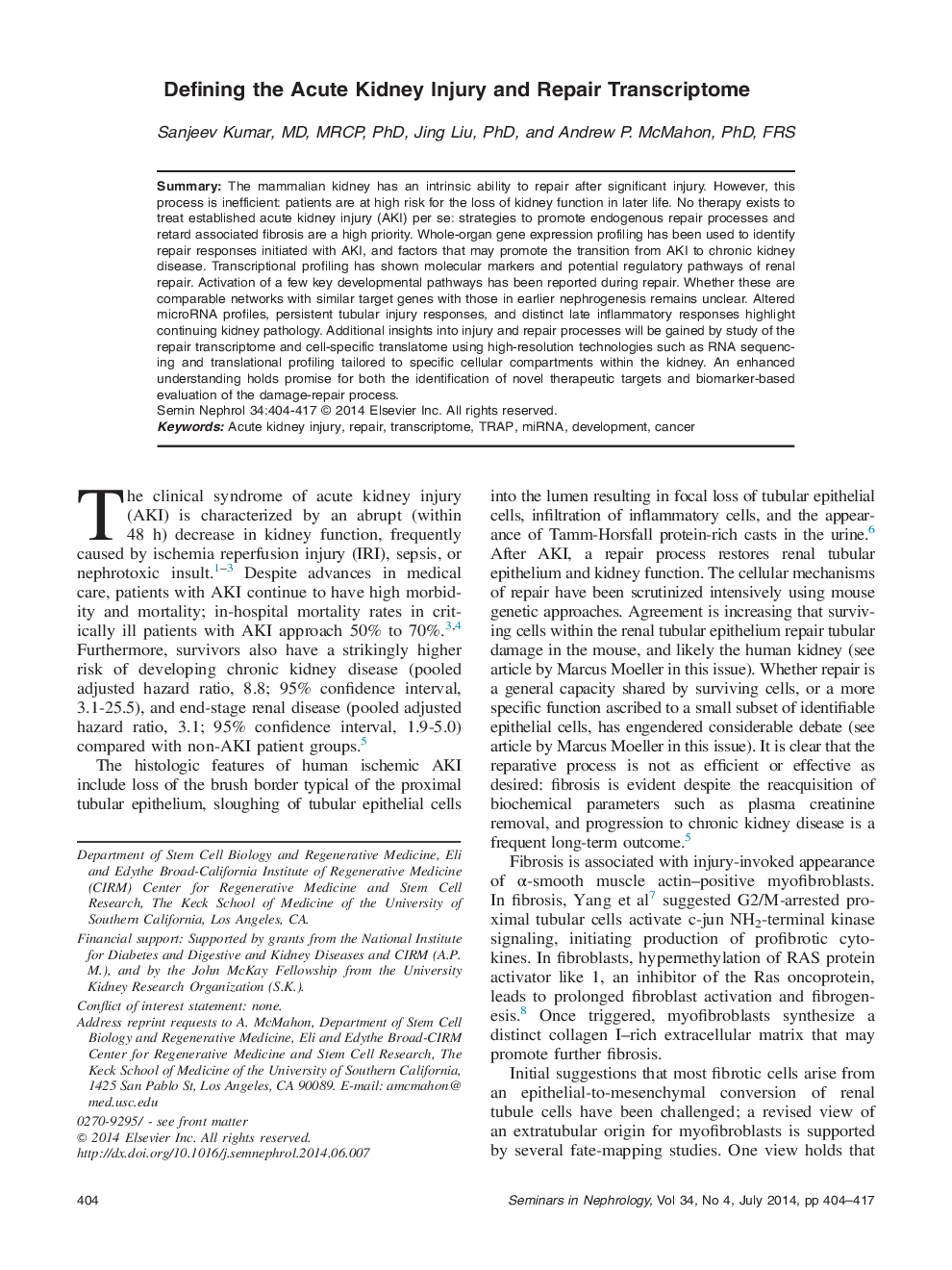| Article ID | Journal | Published Year | Pages | File Type |
|---|---|---|---|---|
| 6165125 | Seminars in Nephrology | 2014 | 14 Pages |
Abstract
The mammalian kidney has an intrinsic ability to repair after significant injury. However, this process is inefficient: patients are at high risk for the loss of kidney function in later life. No therapy exists to treat established acute kidney injury (AKI) per se: strategies to promote endogenous repair processes and retard associated fibrosis are a high priority. Whole-organ gene expression profiling has been used to identify repair responses initiated with AKI, and factors that may promote the transition from AKI to chronic kidney disease. Transcriptional profiling has shown molecular markers and potential regulatory pathways of renal repair. Activation of a few key developmental pathways has been reported during repair. Whether these are comparable networks with similar target genes with those in earlier nephrogenesis remains unclear. Altered microRNA profiles, persistent tubular injury responses, and distinct late inflammatory responses highlight continuing kidney pathology. Additional insights into injury and repair processes will be gained by study of the repair transcriptome and cell-specific translatome using high-resolution technologies such as RNA sequencing and translational profiling tailored to specific cellular compartments within the kidney. An enhanced understanding holds promise for both the identification of novel therapeutic targets and biomarker-based evaluation of the damage-repair process.
Related Topics
Health Sciences
Medicine and Dentistry
Nephrology
Authors
Sanjeev MD, MRCP, PhD, Jing PhD, Andrew P. PhD, FRS,
